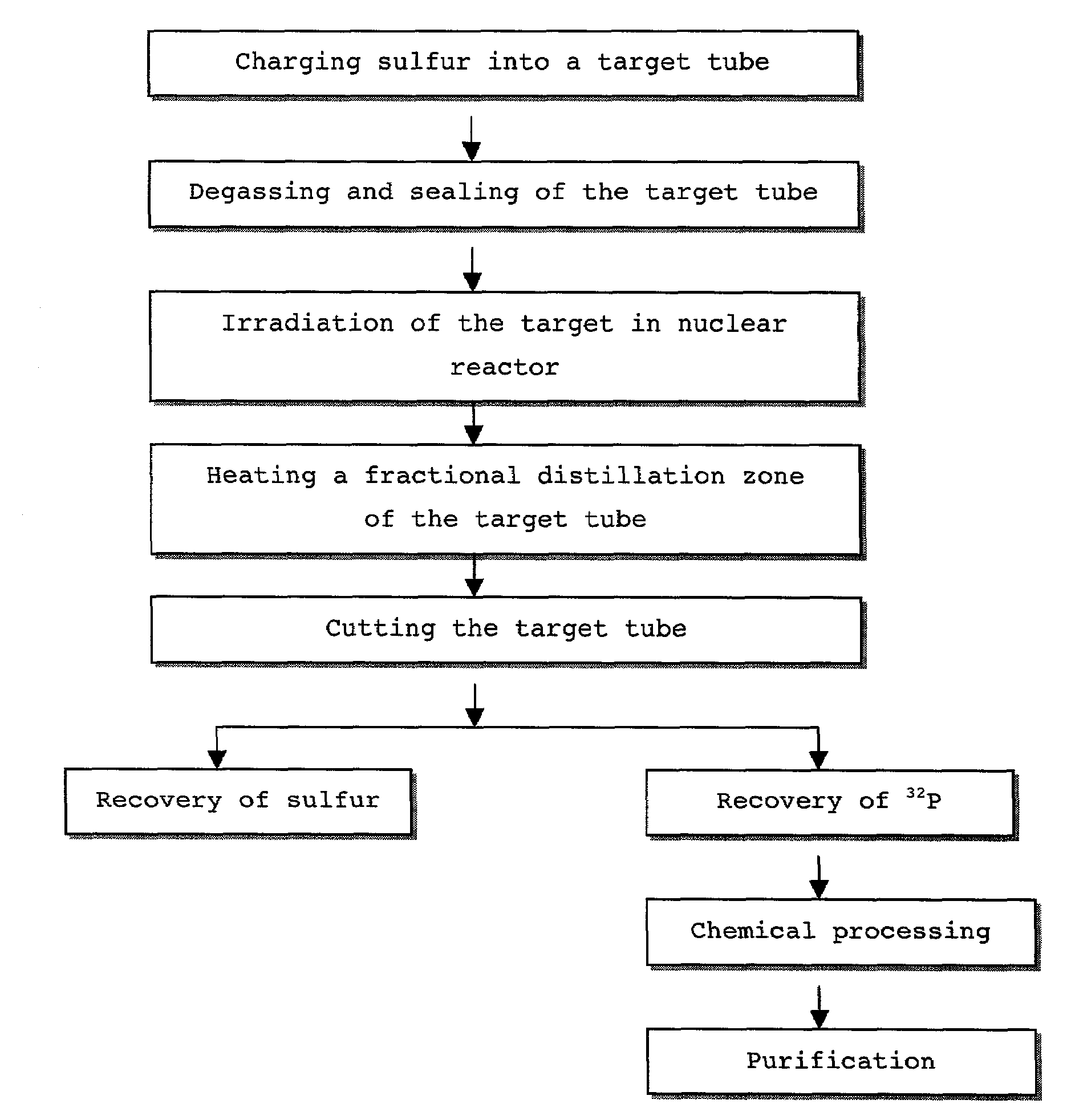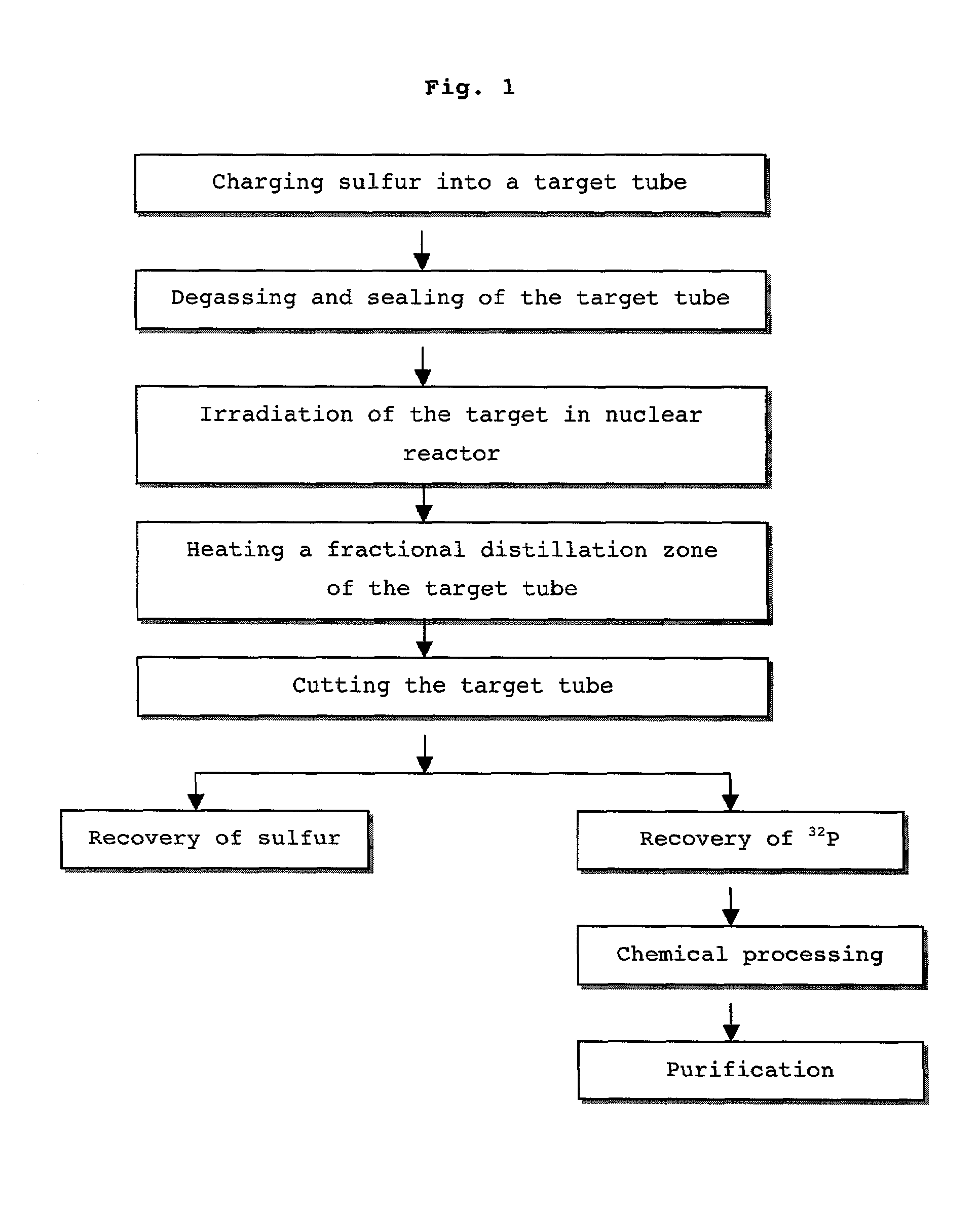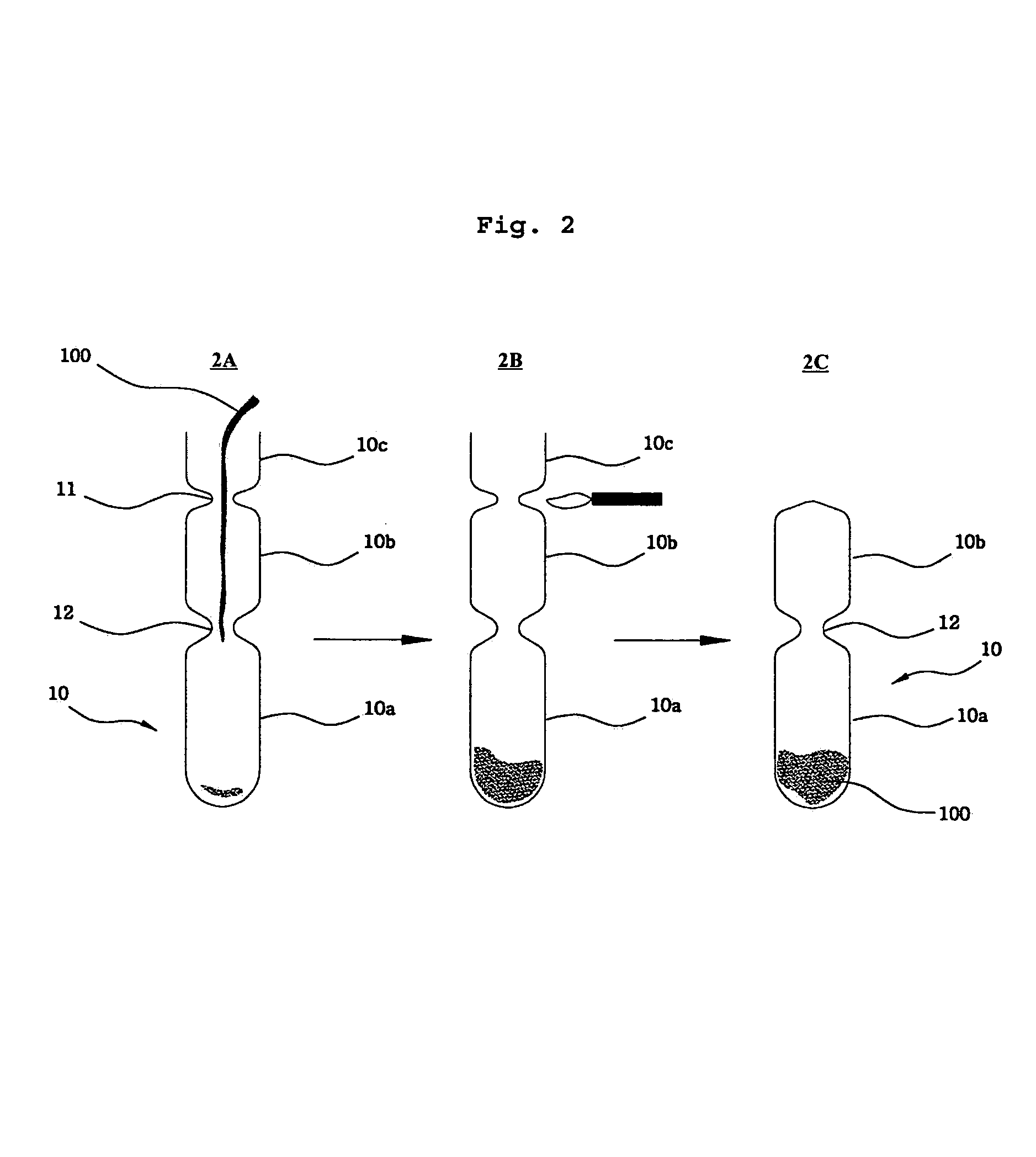Method for distillation of sulfur for the preparing radioactive phosphorous nuclide
a technology of radioactive phosphorous and distillation method, which is applied in vacuum distillation separation, separation process, therapy, etc., can solve the problems of low recovery yield, high cost, and high cost of extraction, and achieve the effect of more effective distillation of sulfur
- Summary
- Abstract
- Description
- Claims
- Application Information
AI Technical Summary
Benefits of technology
Problems solved by technology
Method used
Image
Examples
example 1
1. Purification of Sulfur
[0066]Powdered sulfur (MERCK ART 7892) was charged into a subliming reactor, and heated at 150° C. to melt. The subliming reactor was connected with a vaporizing apparatus to reduce its inner pressure to 100 mm of Hg and then heated to at 300° C. Sublimed sulfur- was moved to and condensed at a receiving flask to afford a pure yellowish sulfur. The obtained sulfur was purified repeatedly three times according to this procedure to afford purified sulfur.
2. Degassing and Distillation
[0067]The sulfur purified in the above step 1) was ground and charged into a target tube, which was made of quartz in a variety of sizes (see Table 1). After being charged with sulfur, the target tube was degassed with the aid of a vacuum pump to form a vacuum state. The target tube was then sealed by heating with a torch, as described in the procedure of FIG. 2. After sealed target tube was placed in a distillation apparatus, distilling was carried out until the sulfur could no lo...
experimental example 1
[0069]To determine yield of the sulfur distilled in the above Example 1, the target tube was cleaved and the sulfur in the cooling zone was recovered. Then, the amount of sulfur in the cooling zone of the each target tube was weighed using a precision balance. As a result, it was confirmed that the each yield of sulfur recovered in item Nos. 1-7 of Table 1 was over 99.9%.
2. Effect of Distilling Temperature
[0070]To determine effect of distilling temperature, distillation of sulfur was carried out as follows.
[0071]After the insertion of a probe into a glass tube of the same size as the target tube (FIG. 3), the probe was heated to various temperatures, i.e., 80V (145° C.), 82V (160° C.), 85V (180° C.), 90V (210° C.), using a SLIGHDAX (Daelim Electric Corp., D45(220V)) as a temperature-controller. The variation of temperature at each voltage was detected at intervals of 1 cm relative to the total length of the target tube, thus obtaining the result shown in F...
example 2
1. Preparation of Radioactive Phosphorous Nuclide (32P)
[0074]Radioactive phosphorous nuclide was prepared according to the method of the present invention.
[0075]Five grams of elemental sulfur (powder) was charged into a target tube having a dimension of 1.1 cm×12 cm (diameter×length). The tube was degassed with the aid of a vacuum pump to reach an inner pressure of 0.1 torr, and then sealed by heating with a torch. The target tube was inserted into an aluminum capsule immersed in a bath of cooling water. Once cooled down, the aluminum capsule was sealed by cold rolling.
[0076]The sealed capsule was inserted into an irradiation reactor (IP No. 15) in a HANARO reactor (kept by the inventor) for producing an isotope and was then irradiated for 72 hours. The fast neutron flux of irradiation hole was 2.38×1012n / cm2 ·s. The used sulfur was highly purified in the same procedure as described in Example 1 (purity >99%).
[0077]After the completion of irradiation, the target tube isolated from t...
PUM
| Property | Measurement | Unit |
|---|---|---|
| temperature | aaaaa | aaaaa |
| temperature | aaaaa | aaaaa |
| inner pressure | aaaaa | aaaaa |
Abstract
Description
Claims
Application Information
 Login to View More
Login to View More - R&D
- Intellectual Property
- Life Sciences
- Materials
- Tech Scout
- Unparalleled Data Quality
- Higher Quality Content
- 60% Fewer Hallucinations
Browse by: Latest US Patents, China's latest patents, Technical Efficacy Thesaurus, Application Domain, Technology Topic, Popular Technical Reports.
© 2025 PatSnap. All rights reserved.Legal|Privacy policy|Modern Slavery Act Transparency Statement|Sitemap|About US| Contact US: help@patsnap.com



